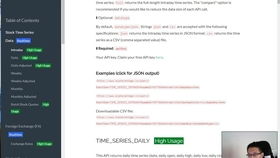Understanding Options Trading

Before diving into the world of day trading options, it’s crucial to have a solid understanding of what options are and how they work. An option is a financial contract that gives the buyer the right, but not the obligation, to buy or sell an underlying asset at a predetermined price within a specific time frame. This underlying asset could be a stock, bond, commodity, or even another option.
Types of Options

There are two main types of options: calls and puts. A call option gives the buyer the right to purchase the underlying asset, while a put option gives the buyer the right to sell the underlying asset. Understanding the difference between these two types is essential for making informed trading decisions.
Day Trading Options: The Basics

Day trading options involves buying and selling options within the same trading day. This strategy requires quick decision-making and a thorough understanding of market dynamics. Here’s a step-by-step guide to help you get started:
-
Choose a Broker: Select a reputable broker that offers options trading. Ensure they provide access to real-time data and tools necessary for day trading.
-
Open an Account: Open a trading account with your chosen broker and fund it with the capital you plan to use for day trading.
-
Learn the Lingo: Familiarize yourself with key terms such as strike price, expiration date, premium, and implied volatility.
-
Develop a Strategy: Create a trading plan based on your risk tolerance, market analysis, and trading style. This plan should include entry and exit criteria, as well as risk management techniques.
-
Practice: Use a demo account to practice your trading strategy without risking real money. This will help you gain confidence and refine your skills.
-
Start Trading: Once you’re comfortable with your strategy, start trading live options. Remember to stick to your plan and avoid emotional decision-making.
Market Analysis
Successful day trading options requires a keen understanding of market analysis. Here are some key factors to consider:
-
Technical Analysis: Use technical indicators and chart patterns to identify potential trading opportunities. Common indicators include moving averages, RSI, and MACD.
-
Fundamental Analysis: Stay updated on news and events that may impact the underlying assets you’re trading. This includes earnings reports, economic data, and political developments.
-
Implied Volatility: High implied volatility can lead to higher premiums, which may present attractive trading opportunities. Conversely, low implied volatility may indicate a lack of market movement and potentially lower premiums.
Risk Management
One of the most critical aspects of day trading options is managing risk. Here are some tips to help you mitigate potential losses:
-
Set Stop-Loss Orders: Use stop-loss orders to limit your potential losses on each trade. This will help you exit a position if the market moves against you.
-
Limit Positions: Avoid over-leveraging your account by limiting the number of positions you hold at any given time. This will help you maintain control over your risk exposure.
-
Understand Time Decay: Options lose value as they get closer to expiration. Be mindful of time decay and adjust your strategy accordingly.
Real-World Examples
Let’s look at a few real-world examples of day trading options:
| Underlying Asset | Option Type | Strike Price | Expiration Date | Market Price | Trade Size | Profit/Loss |
|---|---|---|---|---|---|---|
| Apple Inc. (AAPL) | Call | $150 | Jan 15, 2023 | $1.50 | 100 | $150 |
| Microsoft Corp. (MSFT) | Put | $300 |



